11 Best Herbal Tinctures For Knee Pain
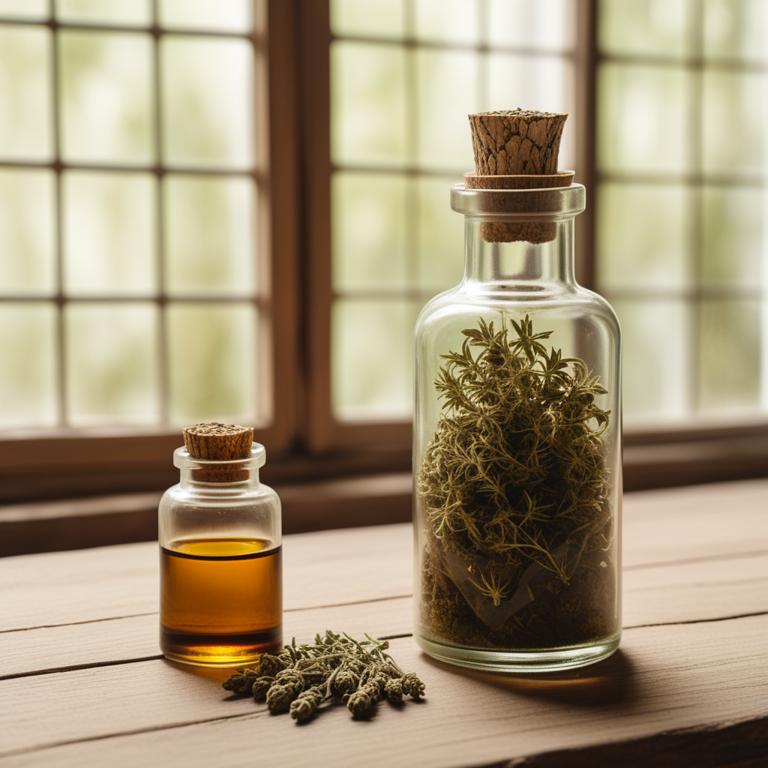
Herbal tinctures for knee pain are concentrated liquid extracts made from various plants and herbs, used to alleviate pain and inflammation in the knee joints.
These natural remedies have gained popularity due to their potential benefits, including reduced inflammation, improved joint mobility, and enhanced pain relief.
Some examples of herbal tinctures used to treat knee pain include Willow bark (Salix alba) which contains salicylic acid, similar to aspirin, Turmeric (Curcuma longa) with its anti-inflammatory properties, Ginger (Zingiber officinale) for its analgesic and anti-inflammatory effects, Boswellia (Boswellia serrata) to reduce inflammation and joint pain, and Devil's Claw (Harpagophytum procumbens) to alleviate pain and inflammation.
By incorporating these herbal tinctures into one's treatment plan, individuals may experience a significant reduction in knee pain and inflammation, allowing them to maintain an active lifestyle and improve their overall well-being.
According to "Arthritis and rheumatism", tinctures for knee pain may be effective in reducing symptoms of osteoarthritis, with a highly concentrated extract of ginger species showing a statistically significant effect on reducing symptoms of knee pain.
Below there's a list of the 11 best herbal tinctures for knee pain.
- 1. Glycyrrhiza glabra tinctures
- 2. Curcuma longa tinctures
- 3. Dioscorea villosa tinctures
- 4. Arnica montana tinctures
- 5. Aloe barbadensis tinctures
- 6. Cinchona officinalis tinctures
- 7. Zingiber officinale tinctures
- 8. Melaleuca alternifolia tinctures
- 9. Angelica sinensis tinctures
- 10. Ginkgo biloba tinctures
- 11. Panax ginseng tinctures
Also you may be interested in...
TODAY'S FREE BOUNDLE
Herb Drying Checklist + Herbal Tea Shopping List + Medicinal Herbs Flashcards
Enter you best email address below to receive this bundle (3 product valued $19.95) for FREE + exclusive access to The Aphotecary Letter.
$19.95 -> $0.00
1. Glycyrrhiza glabra tinctures
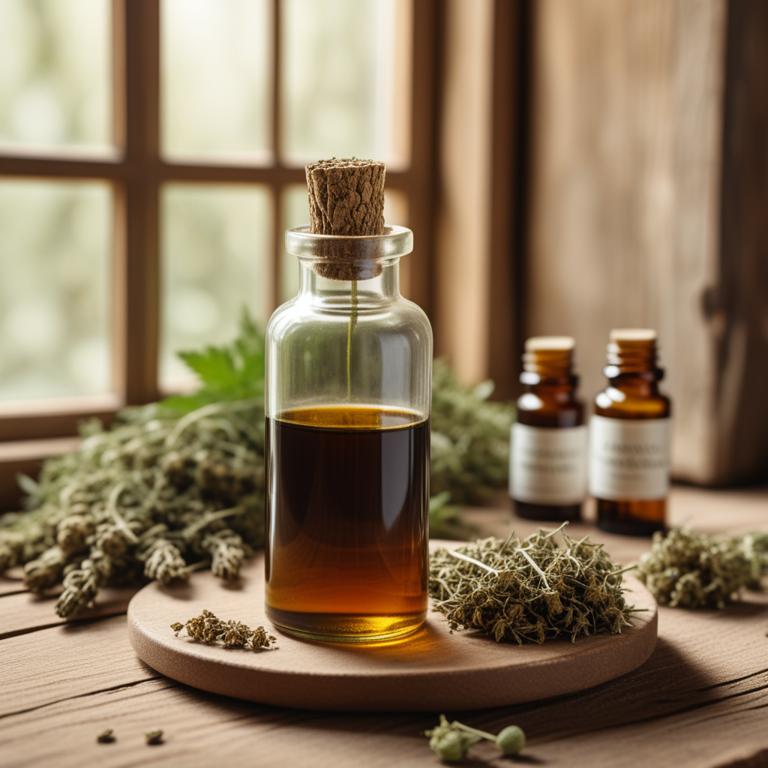
Glycyrrhiza glabra tinctures have been traditionally used to treat knee pain due to their anti-inflammatory and analgesic properties.
The bioactive constituents of Glycyrrhiza glabra, including glycyrrhizin and flavonoids, help to reduce inflammation and alleviate pain in the affected area.
By inhibiting the production of pro-inflammatory enzymes and promoting the release of anti-inflammatory cytokines, Glycyrrhiza glabra tinctures can effectively relieve knee pain and improve joint mobility.
The benefits of using Glycyrrhiza glabra tinctures for knee pain include reduced pain and inflammation, improved joint health, and enhanced overall well-being.
2. Curcuma longa tinctures
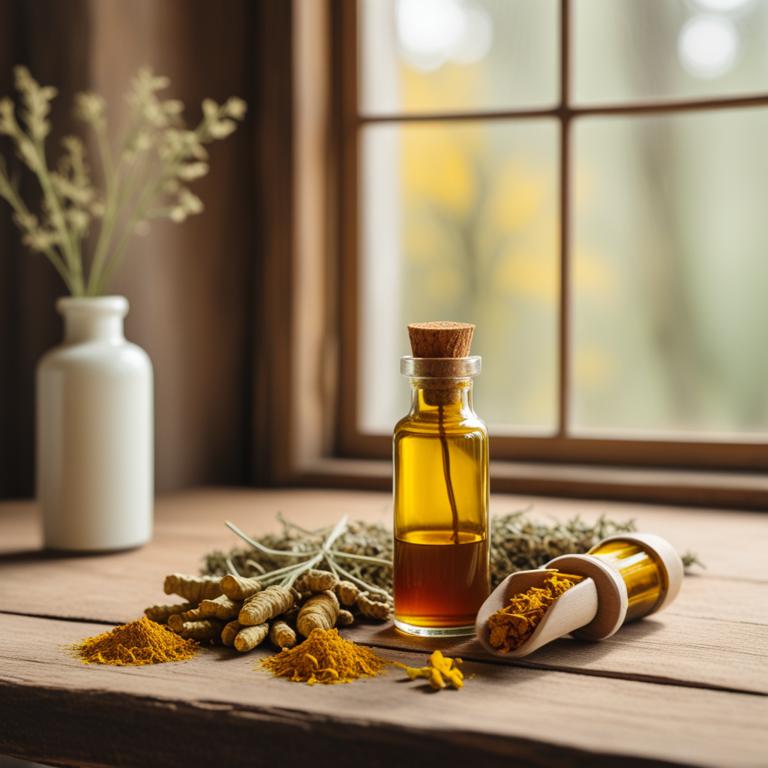
Curcuma longa tinctures have been traditionally used to treat knee pain, a common ailment caused by inflammation and degeneration of joint tissues.
The bioactive constituents of Curcuma longa, such as curcumin and demethoxycurcumin, exhibit potent anti-inflammatory and antioxidant properties, which help to reduce pain and inflammation in the knee joint.
By inhibiting the production of pro-inflammatory enzymes and cytokines, these constituents help to alleviate knee pain and improve joint mobility.
The benefits of using Curcuma longa tinctures to treat knee pain include reduced pain and inflammation, improved joint function, and enhanced overall well-being.
Related Study
According to "Current rheumatology reviews", Curcuma longa tinctures for knee pain may be beneficial due to curcumin's anti-inflammatory properties, which have been scientifically demonstrated to exhibit medicinal benefits for osteoarthritis, a common cause of knee pain.
3. Dioscorea villosa tinctures
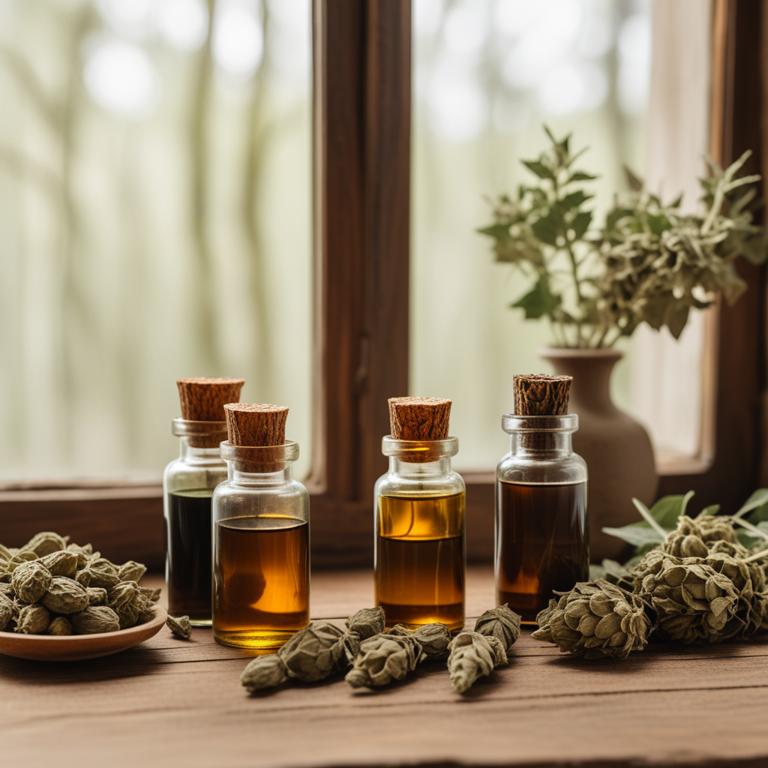
Dioscorea villosa tinctures have been traditionally used to treat knee pain, a common ailment caused by inflammation and degeneration of the joints.
The anti-inflammatory and analgesic properties of this herbal preparation help to reduce pain and swelling in the knee joint, providing relief from discomfort and stiffness.
The bioactive constituents of Dioscorea villosa tinctures, including diosgenin and saponins, play a key role in modulating the body's inflammatory response and promoting healing in the affected tissues.
By using Dioscorea villosa tinctures, individuals can experience benefits such as reduced pain and inflammation, improved mobility, and enhanced quality of life, making it a popular natural remedy for knee pain treatment.
4. Arnica montana tinctures
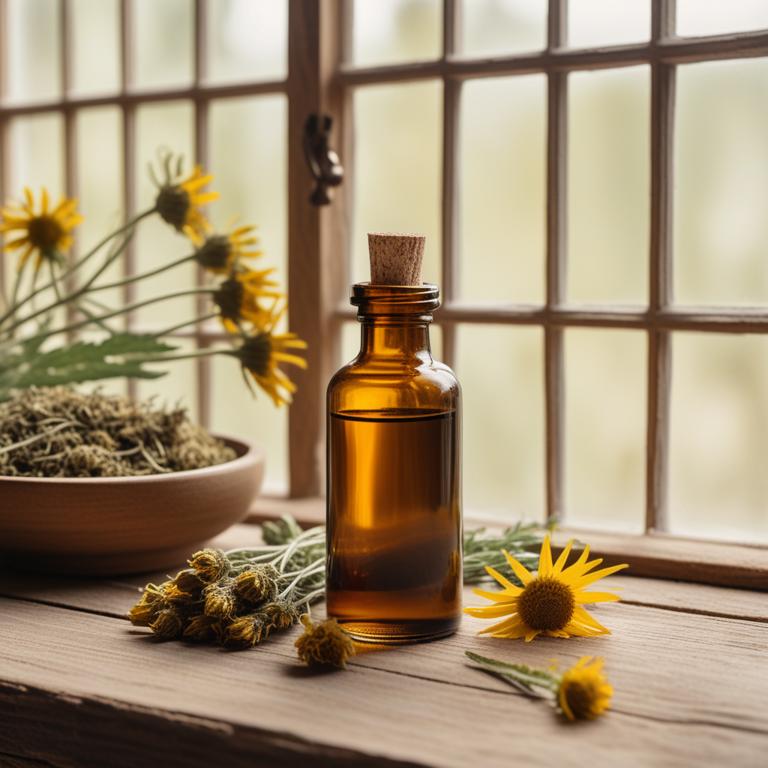
Arnica montana tinctures are a popular herbal preparation used to treat knee pain, particularly due to their anti-inflammatory and analgesic properties.
These tinctures contain bioactive constituents such as sesquiterpene lactones, flavonoids, and phenolic acids, which work together to reduce inflammation and alleviate pain in the knee joint.
By reducing swelling and pain, Arnica montana tinctures help to improve range of motion and mobility in individuals suffering from knee pain, allowing them to engage in daily activities with greater ease and comfort.
The benefits of using Arnica montana tinctures for knee pain include reduced dependence on pain medications, improved joint health, and a natural approach to managing chronic pain.
5. Aloe barbadensis tinctures
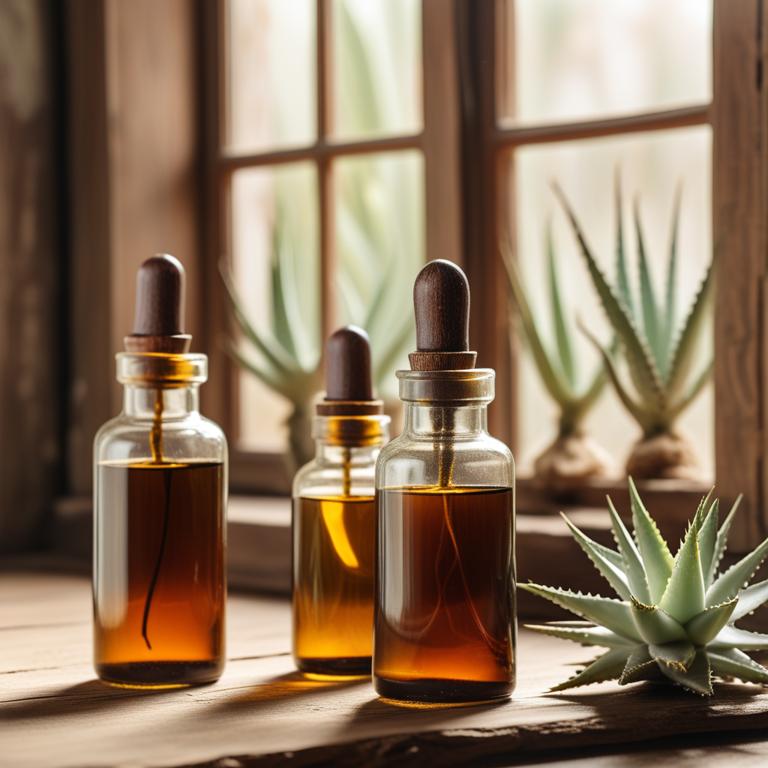
Aloe barbadensis tinctures have been traditionally used to treat knee pain due to their anti-inflammatory and analgesic properties, which help to reduce pain and swelling in the affected area.
The bioactive constituents of aloe vera, including aloin, aloe-emodin, and acemannan, work together to inhibit the production of pro-inflammatory enzymes and cytokines, thereby alleviating knee pain.
The tincture's ability to reduce inflammation and promote tissue repair also helps to improve joint mobility and reduce stiffness, making it an effective natural remedy for knee pain relief.
By using aloe barbadensis tinctures, individuals can enjoy the benefits of reduced pain, improved joint function, and enhanced overall well-being.
Related Study
According to "Journal of the American Podiatric Medical Association", Aloe barbadensis tinctures for knee pain showed a reduction in vascularity by 50% and a decrease in mast cells in synovial fluid by 48% when used to treat carrageenan-inflamed synovial pouches, indicating potential anti-inflammatory effects.
6. Cinchona officinalis tinctures
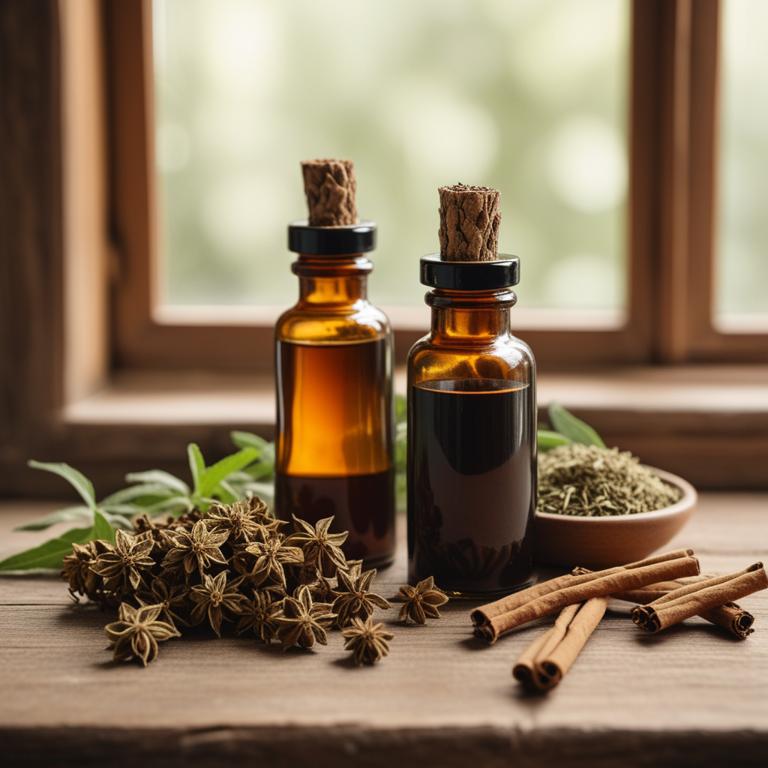
Cinchona officinalis tinctures have been traditionally used to treat knee pain due to their anti-inflammatory and analgesic properties, which help to reduce swelling and alleviate pain.
The bioactive constituents, including quinine and alkylamino alkaloids, contribute to these therapeutic effects by inhibiting the production of pro-inflammatory enzymes and blocking the transmission of pain signals.
The benefits of using Cinchona officinalis tinctures to treat knee pain include reduced inflammation, improved joint mobility, and enhanced overall well-being.
Regular use of Cinchona officinalis tinctures may also help to reduce reliance on conventional pain medications and promote long-term knee health.
7. Zingiber officinale tinctures

Zingiber officinale tinctures are a herbal preparation derived from the rhizomes of the ginger plant, which has been traditionally used to treat knee pain caused by inflammation and arthritis.
The anti-inflammatory and analgesic properties of Zingiber officinale tinctures help to reduce pain and swelling in the knee joint, providing relief from discomfort and stiffness.
The bioactive constituents responsible for these effects include gingerols and shogaols, which have been shown to inhibit the production of pro-inflammatory enzymes and reduce pain perception.
Regular use of Zingiber officinale tinctures can lead to significant improvements in knee function and mobility, making it a beneficial herbal remedy for treating knee pain.
Related Study
According to "Arthritis and rheumatism", Zingiber officinale tinctures for knee pain showed a statistically significant effect in reducing symptoms of osteoarthritis of the knee, with a moderate reduction in pain and a good safety profile, although with more mild gastrointestinal adverse events compared to the placebo group.
8. Melaleuca alternifolia tinctures
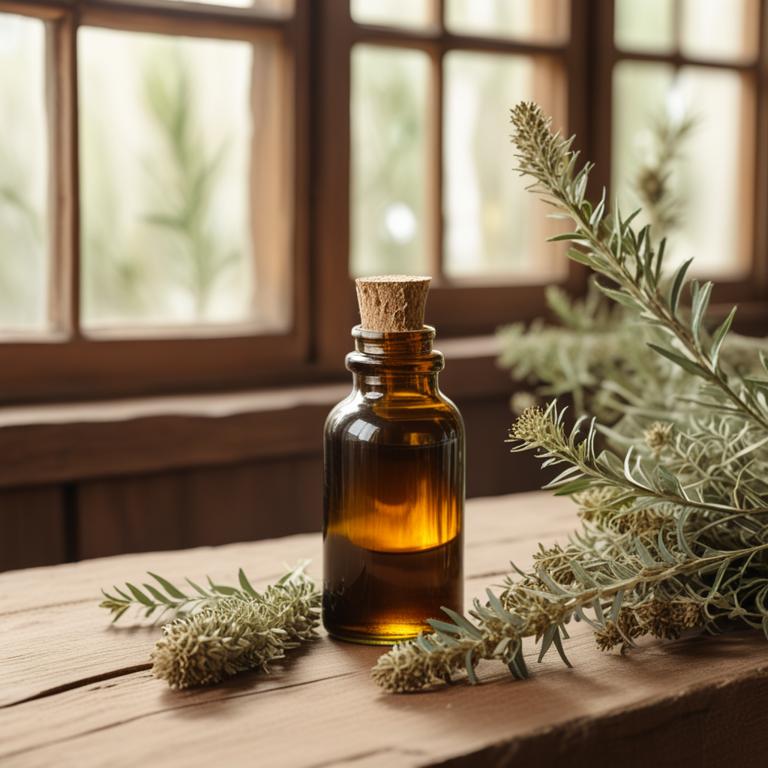
Melaleuca alternifolia tinctures have been traditionally used to treat knee pain due to their anti-inflammatory and analgesic properties, which help to reduce swelling and relieve pain in the affected area.
The bioactive constituents of Melaleuca alternifolia, such as cineole and terpinen-4-ol, contribute to its therapeutic effects by inhibiting the production of pro-inflammatory enzymes and modulating the body's pain response.
This herbal preparation helps to treat knee pain by reducing inflammation, relaxing muscles, and improving joint mobility, making it a valuable natural remedy for individuals seeking alternative solutions.
The benefits of using Melaleuca alternifolia tinctures to treat knee pain include reduced pain and inflammation, improved joint function, and a lower risk of side effects associated with conventional medications.
9. Angelica sinensis tinctures
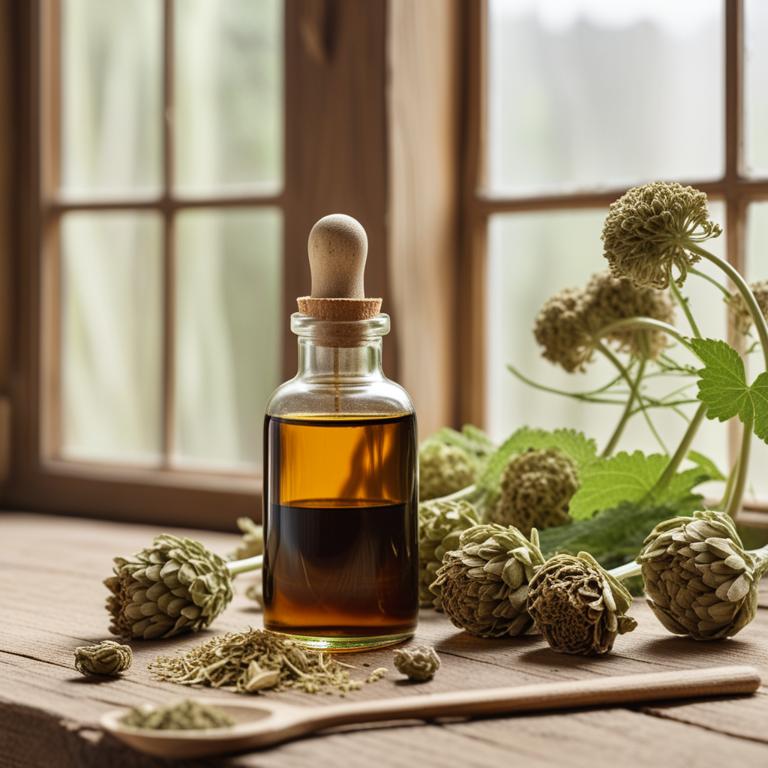
Angelica sinensis tinctures have been traditionally used to treat knee pain due to their anti-inflammatory and analgesic properties, which help to reduce pain and swelling in the affected area.
The bioactive constituents of Angelica sinensis, including ferulic acid, apiol, and ligustilide, have been shown to inhibit the production of pro-inflammatory enzymes and cytokines, thereby alleviating knee pain.
By reducing inflammation and promoting relaxation, Angelica sinensis tinctures help to improve joint mobility and reduce discomfort, making them a popular natural remedy for knee pain.
The benefits of using Angelica sinensis tinctures to treat knee pain include reduced reliance on pharmaceuticals, fewer side effects, and a more holistic approach to pain management.
10. Ginkgo biloba tinctures
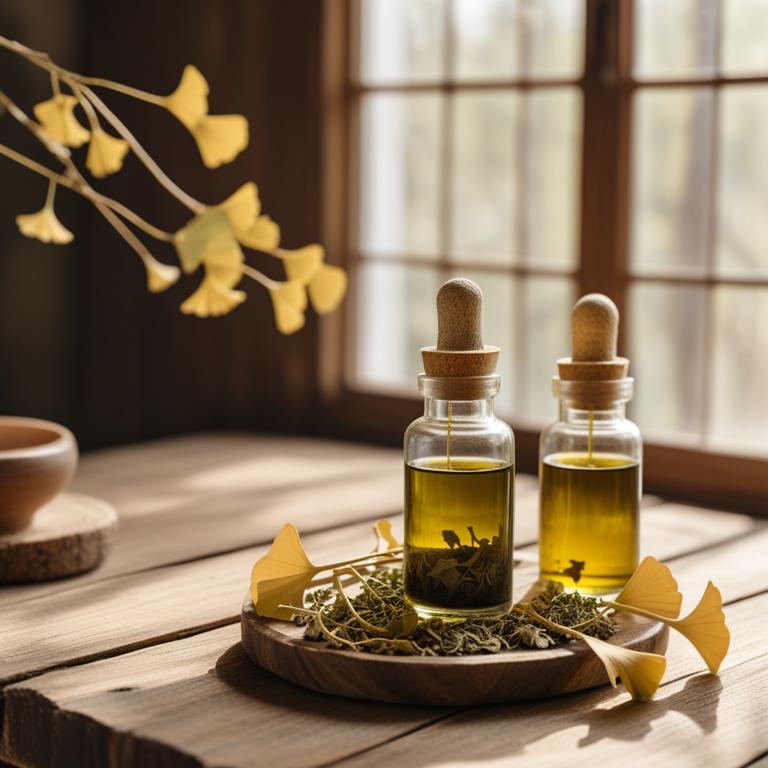
Ginkgo biloba tinctures have been used to treat knee pain by reducing inflammation and improving blood circulation, which helps to alleviate symptoms associated with this ailment.
This herbal preparation contains bioactive constituents such as flavonoids and terpenoids, which have anti-inflammatory and antioxidant properties that help to combat knee pain.
The flavonoids in Ginkgo biloba tinctures, particularly quercetin, kaempferol, and isorhapontigenin, have been shown to inhibit the production of pro-inflammatory enzymes and cytokines, leading to a reduction in knee pain.
Regular use of Ginkgo biloba tinctures has been found to provide long-term benefits in managing knee pain by promoting tissue repair and improving joint mobility, making it an effective natural remedy for this common health issue.
Related Study
According to "Presse medicale (Paris, France : 1983)", Ginkgo biloba tinctures did not specifically target knee pain, but they did provide significantly greater pain relief and improved walking tolerance in patients with arteritis after 6 months of treatment, suggesting potential benefits for knee pain relief.
11. Panax ginseng tinctures
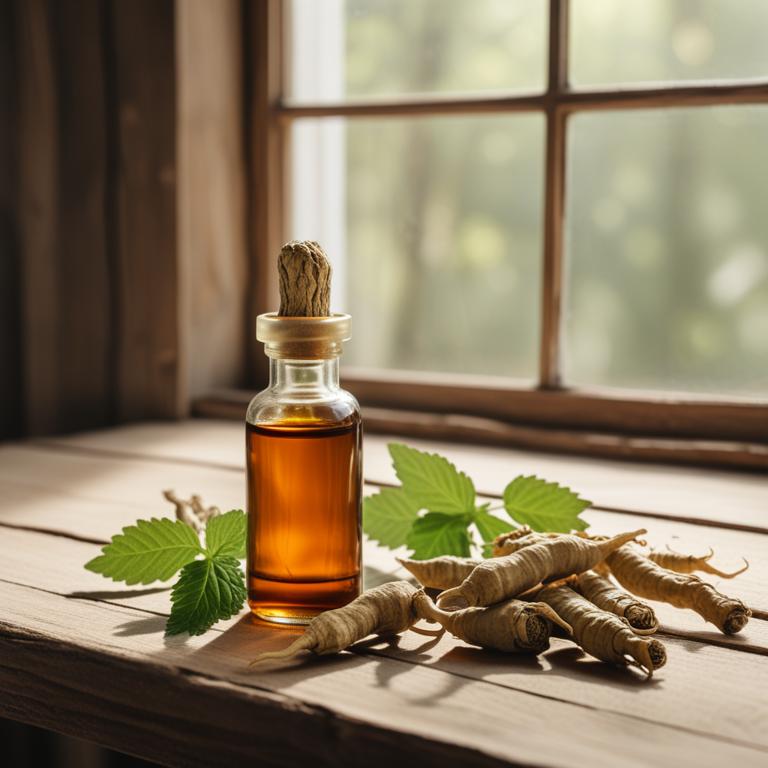
Panax ginseng tinctures are herbal preparations that have been traditionally used to treat knee pain, a common ailment associated with inflammation and degenerative joint disease.
The anti-inflammatory and antioxidant properties of Panax ginseng tinctures help to reduce pain and swelling in the knees by inhibiting the production of pro-inflammatory enzymes and free radicals.
The bioactive constituents of Panax ginseng tinctures, including ginsenosides and polysaccharides, have been shown to modulate the immune system and reduce inflammation, thereby alleviating knee pain.
The benefits of using Panax ginseng tinctures to treat knee pain include reduced dependence on pharmaceutical pain relievers, improved joint mobility, and enhanced overall well-being.